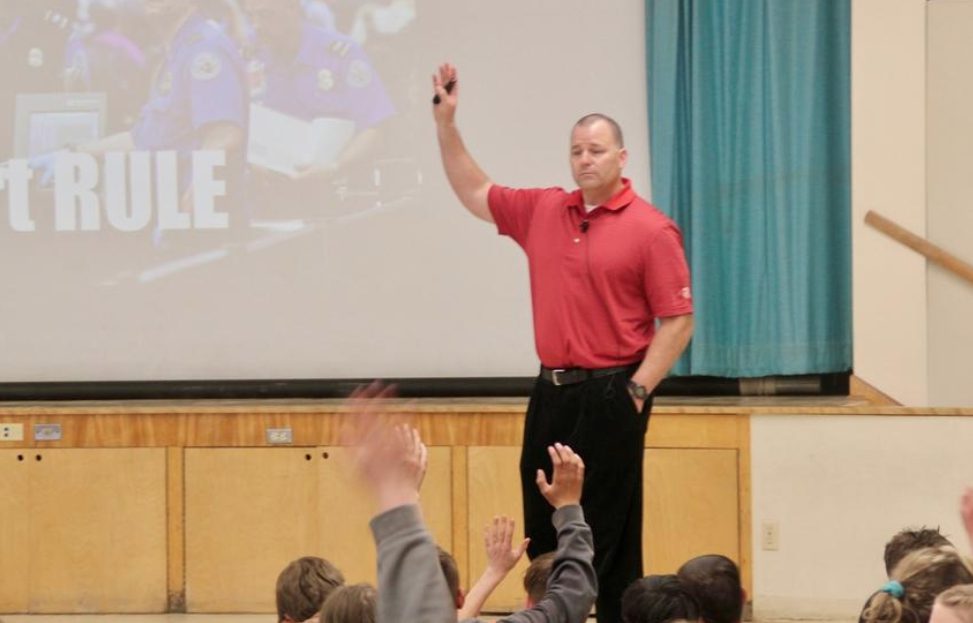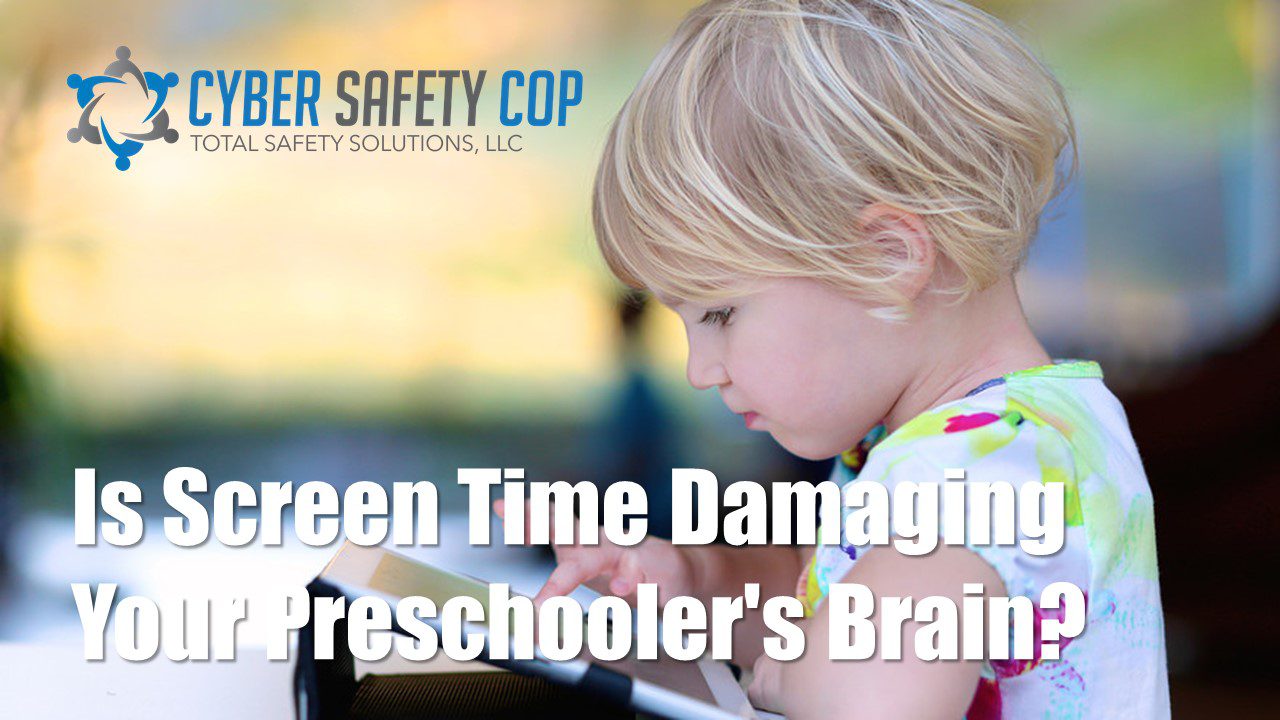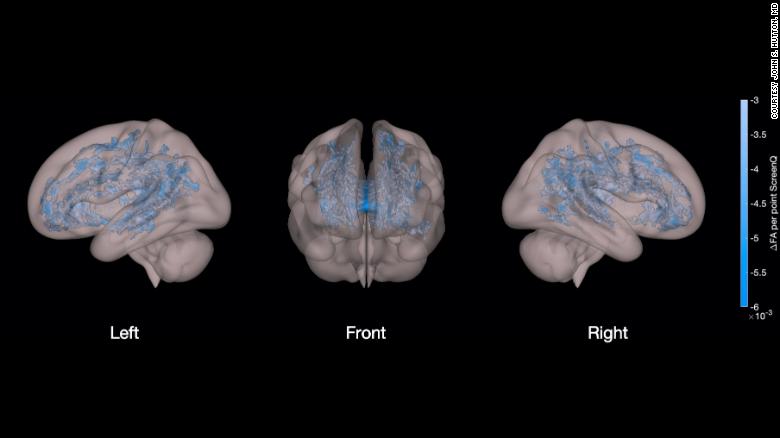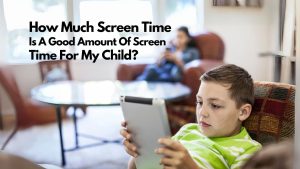Brain scans of children 3 to 5 years old show a link between screen time and lower brain development. Here’s what parents can do to protect their preschooler’s brains without throwing the iPad out the window.
Screen time use by infants, toddlers and preschoolers has exploded over the last few years. Our instructors speak to students in school assemblies about cyber safety all over the United States. When we started doing this six years ago, the very thought of speaking to Kindergarden students would have been ridiculous. Our 4th through 12th grade assemblies focus on three central themes:
-
Do not share your personal information with strangers;
-
Mean, rude, or threatening posts or messages can have devastating consequences; and
-
Since everything you post online lasts forever, post things your future college or employer will find to make you shine, and you can be proud of.
Based on those themes, I saw no reason to talk to kindergarten through 3rd grade students. Why would we, they don’t have phones or social media, right?
About 2 years ago, that all changed. School after school began asking for cyber safety assemblies for their littles. We created an age appropriate assembly with videos of fun cartoon characters that cover basic online safety for kinder through 3rd grade students. When we start all of our assemblies, we always ask the students to raise their hands if they have a phone. In room full of little K through 3rd graders, half of the hands will go up. We then ask who has social media accounts like Instagram or TikTok, half of the phone user’s hands go up. Nearly a quarter of the kinder through 3rd graders we speak to have a social media account. These accounts are intended for children at least 13 years old. Children are getting screens earlier and more often. We know screen time is affecting children’s brains, but now, we have the benefit of brain scan studies to understand what is really happening.
 During an afternoon presentation, Sgt. Michael Woodroof spoke with students at Lucerne Valley Elementary School. Here students raise their hands after “Sgt. Mike” asked a question about internet safety. [Photo by Peter Day]A new study scanned the brains of children 3 to 5 years old (47 brain healthy children – 27 girls and 20 boys) and found those who used screens more than the recommended one hour a day without parental involvement had lower levels of development in the brain’s white matter – an area key to the development of language, literacy and cognitive skills.
During an afternoon presentation, Sgt. Michael Woodroof spoke with students at Lucerne Valley Elementary School. Here students raise their hands after “Sgt. Mike” asked a question about internet safety. [Photo by Peter Day]A new study scanned the brains of children 3 to 5 years old (47 brain healthy children – 27 girls and 20 boys) and found those who used screens more than the recommended one hour a day without parental involvement had lower levels of development in the brain’s white matter – an area key to the development of language, literacy and cognitive skills.
You have probably heard of the brain’s gray matter. Gray matter contains the majority of the brain cells telling the body what to do. White matter is made up of fibers, typically distributed into bundles called tracts, which form connections between brain cells and the rest of the nervous system. The white matter us responsible for organizing communication between the various parts of the brain’s gray matter.
A lack of development of those “cables” can slow the brain’s processing speed; on the other hand, studies show that reading, juggling or learning and practicing a musical instrument improves the organization and structure of the brain’s white matter.
The MRI results showed that children who used more than the American Academy of Pediatrics’ (AAP) recommended amount of screen time (an hour a day without parental interaction) had more disorganized, underdeveloped white matter throughout the brain.
“The average screen time in these kids was a little over two hours a day. The range was anywhere from about an hour to a little over five hours,” said lead author Dr. John Hutton, a pediatrician and clinical researcher at Cincinnati Children’s Hospital.
In addition, the tracts of white matter responsible for executive functions were also disorganized and underdeveloped (the parts of the brain shown in blue in the image).
“These are tracks that we know are involved with language and literacy,” Hutton said, “And these were the ones relatively underdeveloped in these kids with more screen time. So the imaging findings lined up pretty perfectly with the behavioral cognitive testing finding.”
What Parents Can Do
Screens are everywhere, it seems, and they are a convenient source of entertainment and distraction for children. Screentime does not have to be as overwhelming as it may feel at first. Cyber Safety Cop agrees with the AAP 2016 guidelines on screen use by children and adolescents. When parents ask me for tips on limiting their child’s screentime, I tell them it’s about focusing on the basics and engaging your child in activities that don’t include screens.
Infants:
The AAP recommends that no baby under 18 months old should be exposed to screen media, other than video chatting with friends and family. Babies need to interact with caregivers and their environment and not be placed in front of a screen.
Toddlers:
The AAP says toddlers interaction with screen media should only be done with their caregiver. The chief factor in facilitating a toddler’s ability to learn from baby videos and interactive touchscreens, studies show, is when parents watch with them and reteach the content. The amount of screen media use should be very limited, less than an hour a day.
Preschoolers:
Children from 3 to 5 years old can benefit from quality TV shows, such as “Sesame Street,” the AAP says. A well designed show can improve a child’s cognitive abilities, help teach words, and impact their social development.
The AAP warns that many educational apps on the market aren’t developed with input from developmental specialists and can do more harm than good when they take a child away from playtime with caregivers and other children.
And just like toddlers, preschoolers learn much better from any educational materials when they are co-viewed, and the caregiver interacts with the child about the material.
Post Preschool and Beyond:
The AAP has tools to calculate your child’s media time and then establish a family media plan. Two hours of non-educational screens per day is a good goal. Set a schedule and clearly explain your expectations of when screentime is and is not okay in your home. For instance, screens should be excluded from meal times, especally during a family dinner or family sharing time. When you explain to your child why you want to limit screentime (to them, screentime is the favorite part of their day), tell them the reason behind it. Talk to them about the amazing development and growth that is happening in their brain, and how that development can only happen once. As they get older, the development changes and slows. Their early years are critical for making a strong healthy brain.
Thinking about buying your child their first phone? Please read this article first.
Next Steps
- Educate yourself about social media and how to mentor your child’s through their digital world.
- We speak to parents at schools throughout the United States. Find a class near you or find out how to bring a seminar to your child’s school.
- Read the definitive guide for online safety for families, Parenting in the Digital World. If you haven’t already, subscribe to our newsletter.
- Install Bark on your child’s phone. Bark will passively monitor your child’s social media and let you know if there is a problem. Use the promo code, “cybersafetycop” to get 15% off.
References:
https://www.cnn.com/2019/11/04/health/screen-time-lower-brain-development-preschoolers-wellness/index.html






